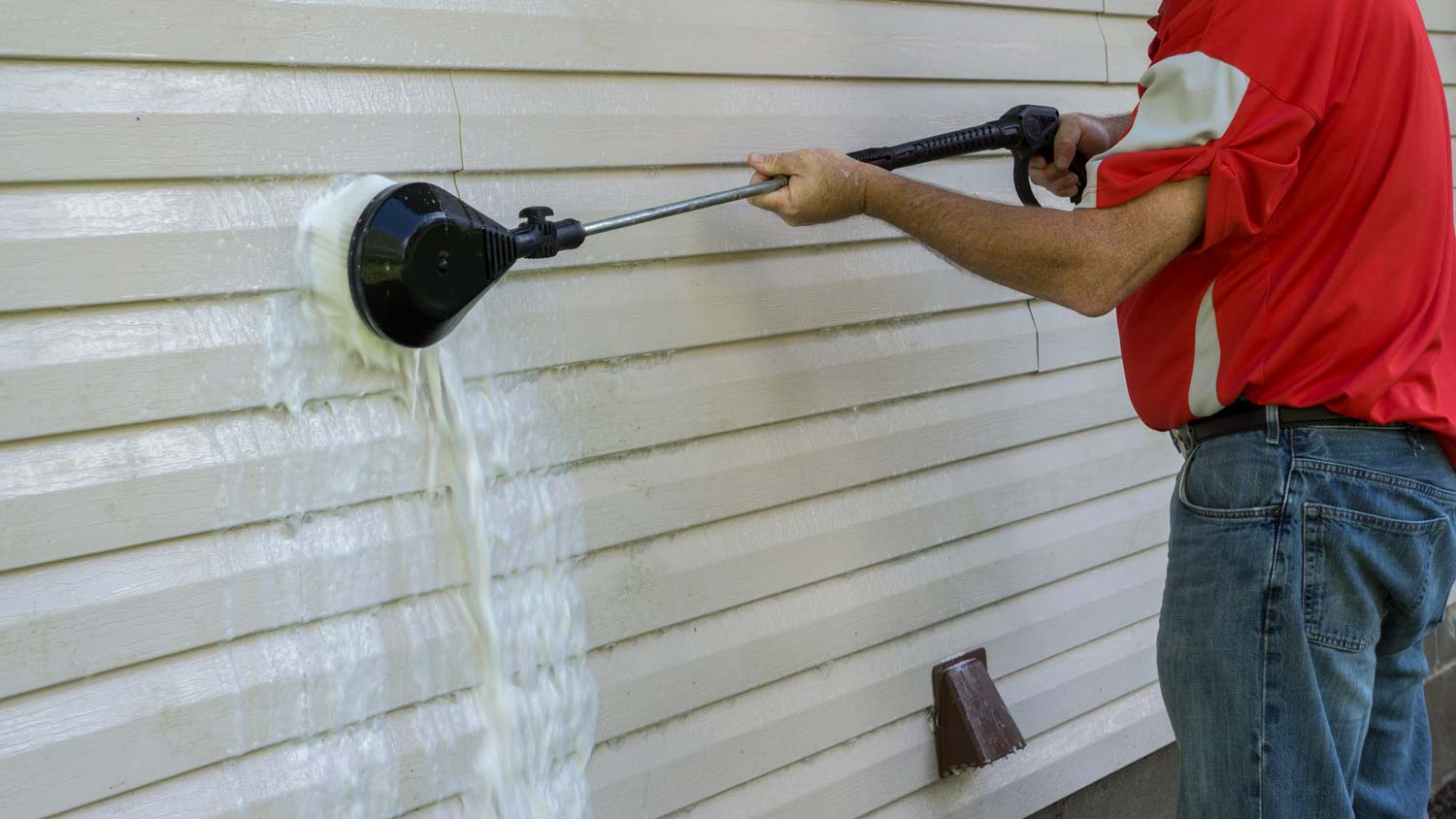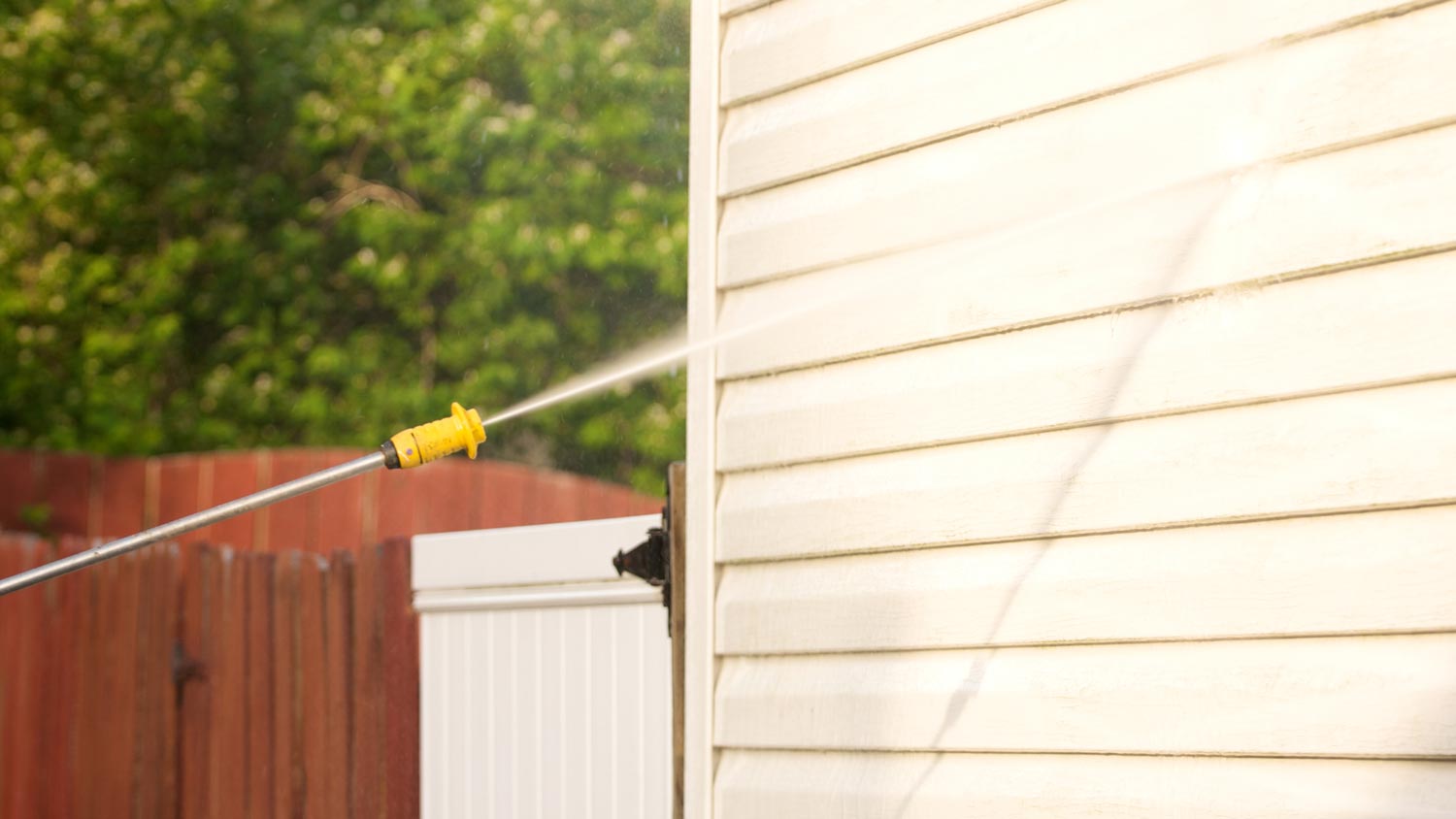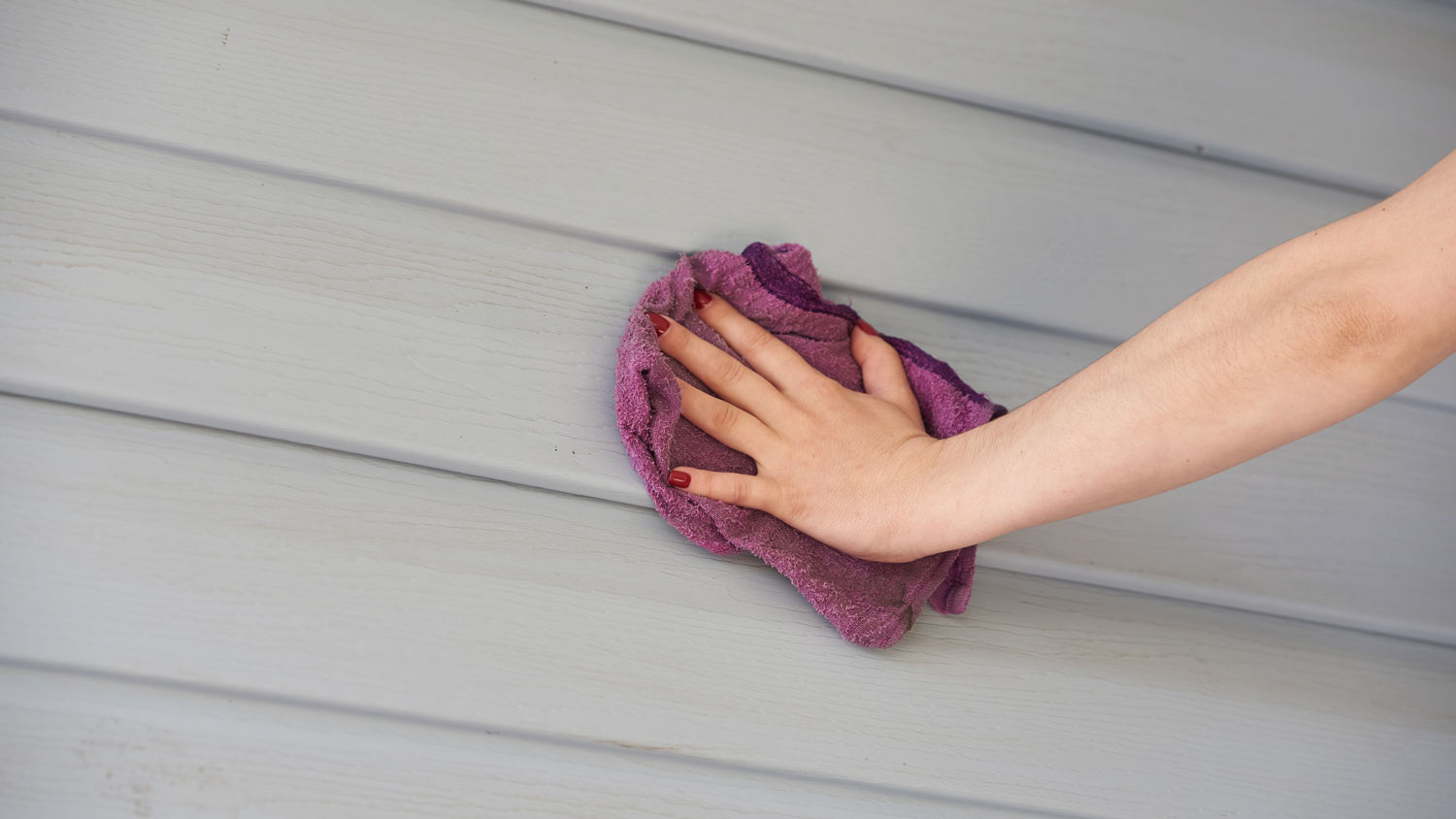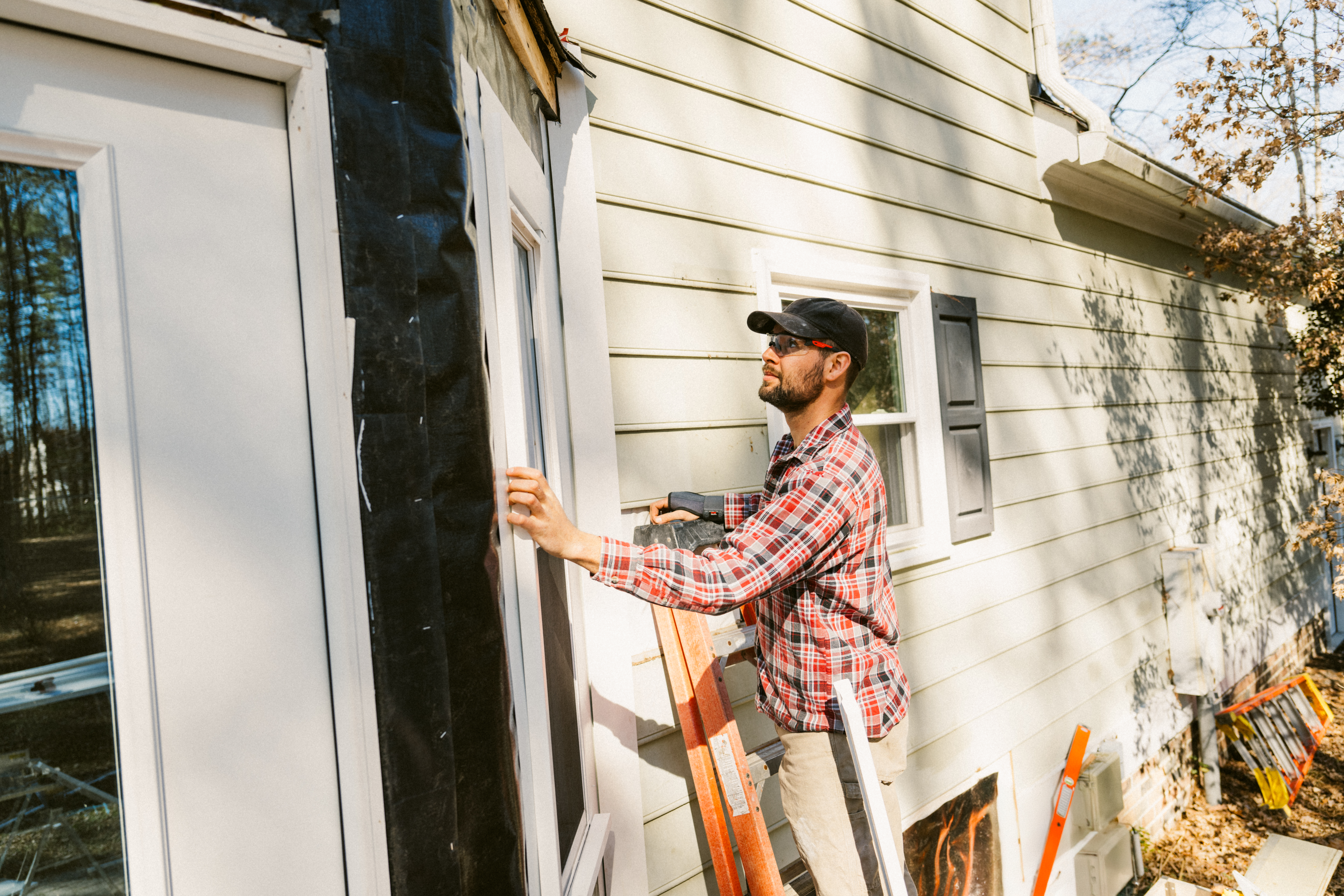
Vinyl siding is an affordable and durable option for almost any home. Learn more about vinyl siding installation costs in Dallas, Texas.
Increase curb appeal in two days


While hiring a pro to restore vinyl siding costs between $300 and $600, it can save time and reduce safety risks compared to DIY.
Restoring faded siding often involves climbing ladders, handling pressure washers, and using specialty products—and these tasks can be time-consuming and dangerous for the average homeowner.
Local vinyl siding cleaning pros have the tools and expertise to complete the job efficiently, ensuring your vinyl siding looks refreshed and lasts longer.
Is your vinyl siding starting to show its age? Faded, dingy siding detracts from your home’s curb appeal, but it’s easier than you might think to give it a makeover. Here’s how to remove built-up dirt, mildew, and stains and restore color to faded vinyl siding.

Restoring faded vinyl siding is a simple DIY task that doesn't require much experience but delivers major results for your home. And it’s a much easier project compared to a siding replacement. Maintaining your siding can prolong its life, and keeping it clean and fresh will boost your curb appeal, too.
If you’ll be doing this job yourself, your only expense will be supplies. You can use a garden hose and sprayer or a pressure washer. A garden hose costs between $20–$50, while a sprayer costs under $10. Most pressure washers range in price from $100–$500, or you can rent one for $50–$100 per day.
You'll also need a cleaning product. Vinyl siding cleaners range from $15 to $55 per container, or you can mix up your own using warm water and mild dish soap.
More difficult restoration jobs may require a premium vinyl siding restorer product, which costs between $100–$300 per container. You'll also need paint brushes or an airless sprayer to apply the product. Paint brushes cost between $15–$30, but an airless sprayer, which costs between $40–$200, would make the job easier.
Even if you used one of the best vinyl siding colors, you’ll know your siding has started to fade when it takes on a dull appearance. Oxidation from exposure to natural elements such as sunlight or rain is a major cause of faded vinyl siding, which is why you might notice that the sides of your home that get the least amount of sun look brighter than others. Accumulated dirt will usually give your siding a brown tint, while green areas on the siding could be a sign of mildew.
To breathe new life into all types of vinyl siding, follow the below steps.

In some cases, knowing how to clean vinyl siding could be enough to counteract fading. No matter what, removing surface stains and dirt is always the first step.
Mix your cleaning product per the instructions. Most store-bought products come with a spray nozzle attached. You simply attach a garden hose to the container and spray your siding.
You can also choose to clean your siding with a pressure washer. Ensure you're not using too much pressure, as this could damage the vinyl siding. It is recommended to use between 2,500–3,000 psi.
If you're using a homemade mixture of warm water and mild dish soap, you can clean the siding using a soft brush. Work on one small section (about 50 square feet) at a time and avoid letting the cleaner sit on the siding too long. This option may not be best for homes with multiple stories or homeowners who are uncomfortable climbing ladders.
If your siding still looks faded after you’re done cleaning, move on to the next step.
To restore faded areas, you'll work in sections to apply a premium restoration product. The product should only be applied to clean, dry surfaces. You'll also want to check the forecast to ensure rain isn't on the horizon for at least 24 hours.
Mix the product per the instructions and use an airless paint sprayer or paintbrush to apply the first coat. Allow the product to dry for 30–60 minutes, and then assess if another coat is needed (in most cases, a second coat is recommended).
Most products will fully cure within one month. During that time, avoid washing or spraying the siding.
If all restoration methods have failed, you may need to repaint the vinyl siding. Sometimes, the siding is simply beyond standard restoration methods. For example, many foreclosure homes may have distressed sidings that would benefit from a repaint.
Prepare the painting surface by washing and wiping it clean. You don’t need to remove any existing paint unless it’s chipping and can be peeled off. Also, repair any visual damage before repainting.
Use two layers of vinyl-safe paint when the weather is warm. Most vinyl siding paint requires the outside temperature to be between 40 to 90 °F. Wait for 4 to 6 hours before applying the second coat, and allow two days for the paint to dry fully.

The best way to prevent faded vinyl siding is to keep up with regular maintenance tasks, including:
Clean your siding about once per year (or more often, if necessary).
Inspect your siding once or twice annually, looking for signs of damage, such as cracks and loose pieces. If you discover extensive damage, getting it fixed may require the services of a local vinyl siding installer.
Repair any holes in your vinyl siding right away to keep water and pests from infiltrating.
Keep foundation plants properly trimmed for good air circulation and to prevent moisture buildup on your siding.
From average costs to expert advice, get all the answers you need to get your job done.

Vinyl siding is an affordable and durable option for almost any home. Learn more about vinyl siding installation costs in Dallas, Texas.

Installing fiber cement siding in Dallas often means working around the city’s intense sun, heavy storms, and wide range of home styles. This guide walks through the key cost factors, so you can plan your project with confidence.

Siding repairs protect Dallas homes from water intrusion, which can cause mold and severe structural damage. Learn the average siding repair cost in Dallas.

Learn more about the best types of cement siding and their benefits for your home.

Exterior Insulation and Finish Systems, or EIFS, is a stucco look-a-like but is actually very different. It can be hard to clean and expensive to install, but EIFS is a durable, energy-efficient, and attractive option to spruce up any home.

Need new siding but want a unique appearance and boosted home value? Use this guide on mixing siding types to nail that aesthetic and curb appeal.